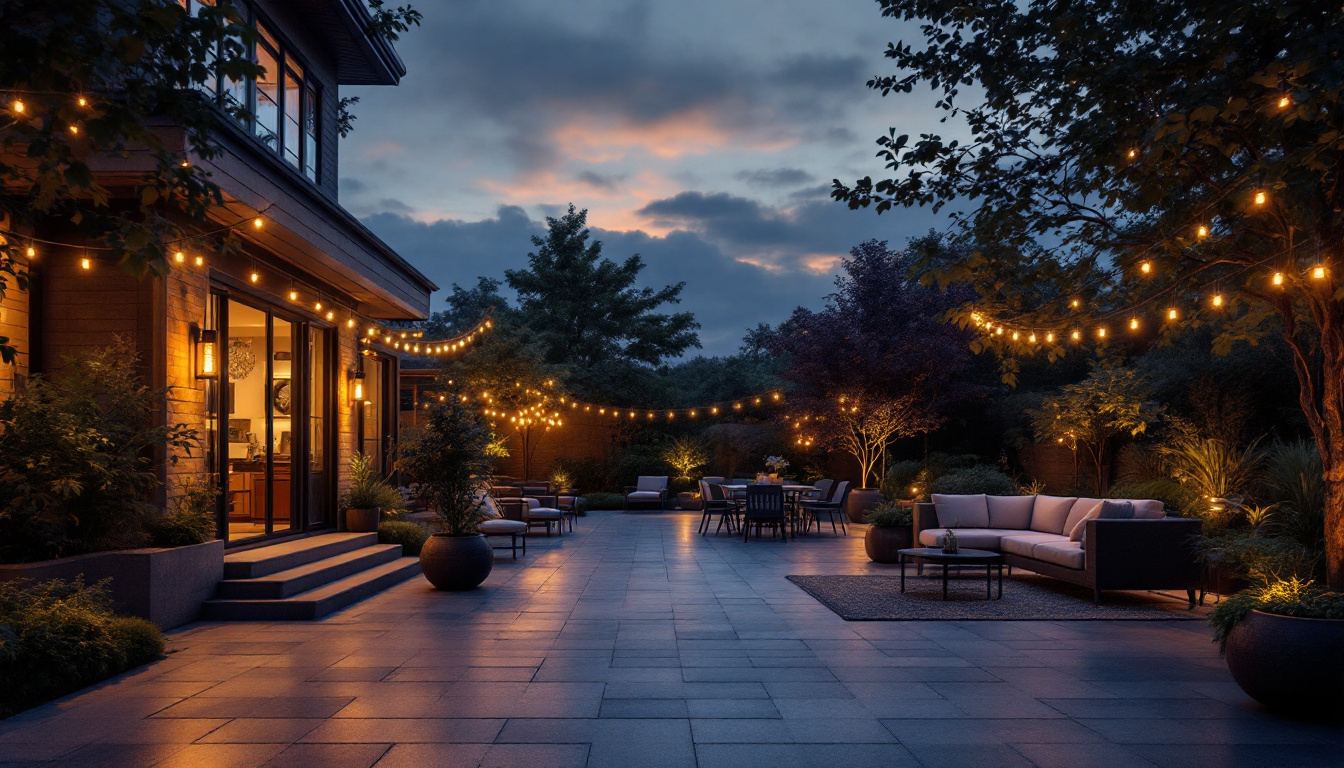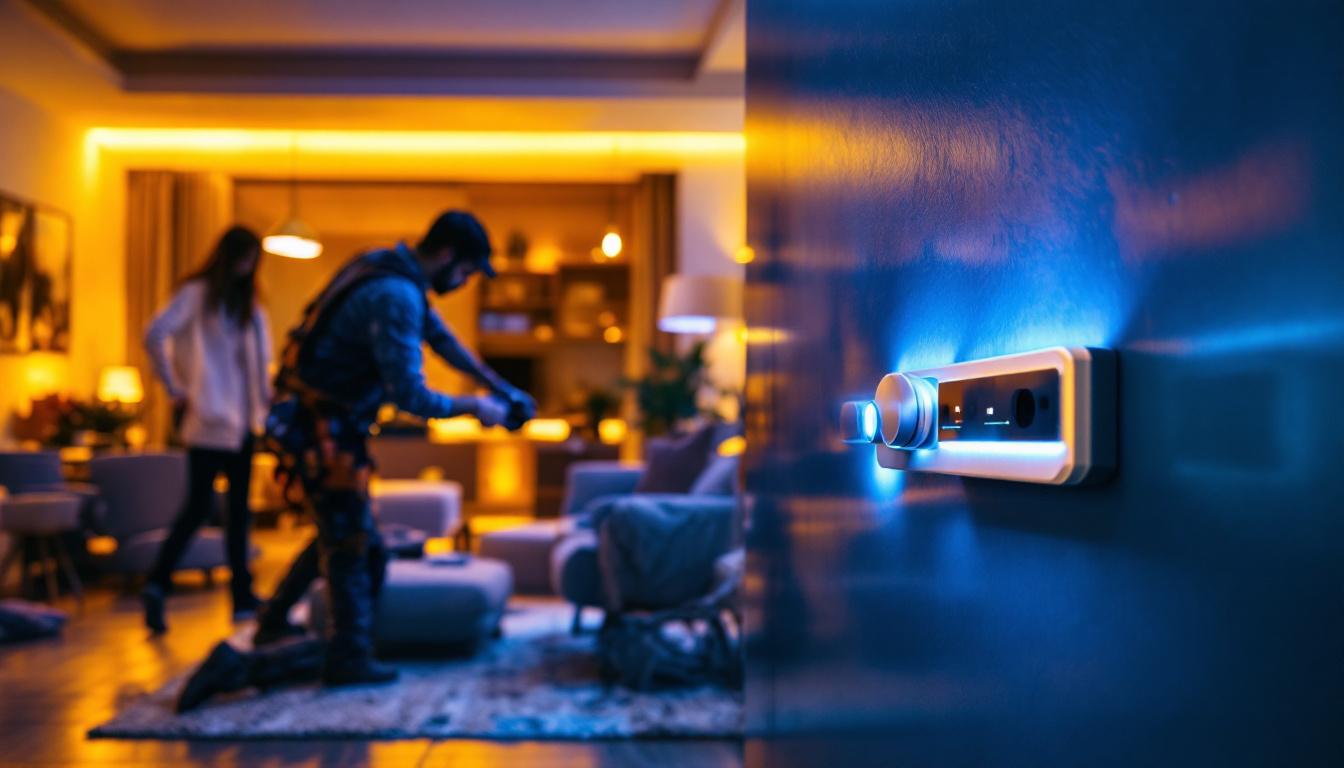
In the realm of commercial outdoor lighting, the choice of fixtures plays a pivotal role in enhancing safety, aesthetics, and functionality. For lighting contractors, mastering the intricacies of outdoor light fixtures is essential to delivering exceptional results for clients. This article delves into the various aspects of commercial outdoor light fixtures, providing insights on selection, installation, and maintenance that can elevate a contractor’s expertise.
Commercial outdoor lighting encompasses a wide array of fixtures designed for different applications. Understanding these types is crucial for contractors looking to provide tailored solutions to their clients.
Flood lights are versatile fixtures that provide broad illumination, making them ideal for large outdoor spaces such as parking lots, sports fields, and building exteriors. They are typically mounted on poles or walls and can be adjusted to direct light where it is most needed. When selecting flood lights, contractors should consider lumen output, beam angle, and energy efficiency to ensure optimal performance. Additionally, modern flood lights often come equipped with smart technology, allowing for remote control and scheduling, which can enhance energy savings and operational efficiency. The use of LED flood lights has also gained popularity due to their long lifespan and reduced energy consumption, making them an environmentally friendly choice for commercial applications.
Wall packs are mounted directly onto walls and are commonly used for security lighting in commercial buildings. These fixtures are designed to illuminate entryways, loading docks, and walkways. Contractors should pay attention to the design and placement of wall packs to minimize light pollution while maximizing safety and visibility. In addition to their practical applications, wall packs can also incorporate features such as motion sensors and dimming capabilities, which further enhance security by providing light only when needed. Choosing wall packs with vandal-resistant designs can also be beneficial in high-traffic areas, ensuring durability and longevity in the face of potential damage.
post top lights are often used in parks, pathways, and outdoor plazas, providing both functional and decorative lighting. Their design can vary significantly, allowing contractors to choose fixtures that complement the architectural style of the surrounding environment. When selecting post top lights, factors such as height, wattage, and aesthetic appeal should be considered. These fixtures can also serve as a focal point in landscaping, enhancing the overall ambiance of outdoor spaces. Furthermore, the integration of smart lighting technology into post top lights is becoming increasingly common, enabling features like adaptive brightness based on ambient light levels, which not only improves energy efficiency but also enhances the user experience in public areas. The choice of materials for post top lights, such as corrosion-resistant metals or weatherproof plastics, can also contribute to their longevity and maintenance needs, making them a worthwhile investment for commercial properties.
Choosing the right outdoor light fixtures involves several critical considerations. Lighting contractors must evaluate various factors to ensure the selected fixtures meet the specific needs of their projects.
The primary purpose of the lighting installation should dictate the choice of fixtures. For instance, security lighting requires different specifications compared to decorative lighting. Understanding the application helps in selecting fixtures that provide adequate illumination while enhancing the overall environment. Additionally, it is essential to consider the layout of the space; for example, path lighting should be designed to illuminate walkways without creating harsh shadows, while accent lighting can highlight architectural features or landscaping elements. By aligning the fixture selection with the intended use, contractors can create a functional and aesthetically pleasing outdoor space.
With the growing emphasis on sustainability, energy-efficient lighting solutions have become increasingly important. LED fixtures, for example, offer long lifespans and lower energy consumption compared to traditional incandescent or halogen lights. Contractors should educate clients on the benefits of energy-efficient options, which can lead to significant cost savings over time. Moreover, the integration of smart lighting technologies, such as motion sensors and timers, can further enhance energy efficiency by ensuring lights are only active when needed. This not only reduces electricity bills but also contributes to a more environmentally friendly approach to outdoor lighting.
Outdoor fixtures must withstand various weather conditions, including rain, snow, and extreme temperatures. Selecting fixtures with appropriate IP ratings ensures they are resistant to water and dust ingress. Contractors should prioritize materials that offer durability, such as corrosion-resistant metals and UV-stabilized plastics, to prolong the lifespan of the installations. Furthermore, it is beneficial to consider the local climate when selecting fixtures; for instance, areas prone to high humidity may require additional protective coatings to prevent rust and degradation. By taking these factors into account, contractors can ensure that their lighting solutions remain functional and visually appealing for years to come.
Proper installation is crucial for the performance and longevity of outdoor lighting fixtures. Lighting contractors should adhere to best practices to ensure successful installations that meet safety standards and client expectations.
Before installation, a well-thought-out lighting layout is essential. Contractors should conduct a thorough site assessment to identify key areas that require illumination. This includes considering the height, spacing, and angle of fixtures to achieve even lighting distribution while minimizing shadows and glare. Additionally, it’s beneficial to incorporate a variety of lighting types, such as path lights, spotlights, and wall-mounted fixtures, to create a layered effect that enhances the visual appeal of the landscape. By strategically placing lights to highlight architectural features, trees, or garden elements, contractors can transform an outdoor space into a beautifully illuminated environment that is both functional and inviting.
Electrical safety is paramount in outdoor lighting installations. Contractors must ensure that all wiring is rated for outdoor use and properly protected against moisture. Utilizing GFCI outlets and circuit breakers can help prevent electrical hazards. Additionally, adhering to local electrical codes and regulations is essential for compliance and safety. It is also wise to consider the energy efficiency of the lighting system. Using LED fixtures not only reduces energy consumption but also extends the lifespan of the lights, resulting in lower maintenance costs over time. Furthermore, integrating smart lighting controls can enhance convenience and efficiency, allowing homeowners to adjust brightness levels and schedules remotely.
After installation, testing the fixtures is crucial to ensure they function as intended. Contractors should check for proper illumination levels and make necessary adjustments to angles and positioning. This step ensures that the lighting not only meets aesthetic goals but also serves its intended purpose effectively. It’s also important to evaluate the lighting during different times of the day and in varying weather conditions to ensure consistent performance. Conducting a final walkthrough with the client can provide valuable feedback and allow for any last-minute tweaks, ensuring the installation meets their vision and enhances the overall outdoor experience. Additionally, educating clients on maintenance practices and the importance of regular checks can help preserve the integrity and functionality of the lighting system over time.
Regular maintenance is vital for preserving the functionality and appearance of outdoor light fixtures. Lighting contractors should educate clients on maintenance practices that can extend the life of their installations.
Outdoor fixtures are susceptible to dirt, debris, and weather-related wear. Regular cleaning helps maintain optimal light output and prevents damage. Contractors should recommend a cleaning schedule that includes inspecting fixtures for signs of wear or damage, such as rust or cracked lenses.
For fixtures that use replaceable bulbs, timely replacements are essential to ensure consistent lighting. Contractors should inform clients about the lifespan of bulbs and the importance of using compatible replacements. Keeping an inventory of commonly used bulbs can streamline this process.
As technology advances, older lighting systems may become less efficient or outdated. Contractors should stay informed about new products and technologies that can enhance outdoor lighting systems. Encouraging clients to upgrade to modern solutions, such as smart lighting controls, can improve energy efficiency and user experience.
The outdoor lighting industry is continually evolving, with new trends emerging that can enhance the functionality and aesthetics of installations. Contractors should stay abreast of these innovations to offer cutting-edge solutions to clients.
Smart lighting technology allows for enhanced control and customization of outdoor lighting. Features such as motion sensors, timers, and remote access can significantly improve energy efficiency and user convenience. Contractors should explore options for integrating smart technologies into their projects, providing clients with modern solutions that adapt to their needs.
Solar-powered outdoor lights have gained popularity due to their sustainability and ease of installation. These fixtures harness solar energy during the day to power LED lights at night, reducing reliance on traditional electricity sources. Contractors should consider incorporating solar options into their offerings, especially for remote or off-grid locations.
Beyond functionality, decorative lighting plays a crucial role in enhancing the visual appeal of outdoor spaces. Architectural lighting techniques, such as uplighting and downlighting, can highlight features like trees, sculptures, and building facades. Contractors should be familiar with various decorative lighting options to create stunning outdoor environments that resonate with clients’ visions.
Mastering commercial outdoor light fixtures is a multifaceted endeavor that requires a blend of technical knowledge, creativity, and attention to detail. By understanding the types of fixtures available, considering key selection criteria, adhering to best installation practices, and staying updated on maintenance and innovative trends, lighting contractors can elevate their services and deliver outstanding results.
Ultimately, the goal is to create safe, aesthetically pleasing, and functional outdoor environments that meet the diverse needs of clients. As the demand for effective outdoor lighting solutions continues to grow, contractors who invest in their knowledge and skills will be well-positioned to thrive in this dynamic industry.
Ready to take your commercial outdoor lighting projects to the next level? At LumenWholesale, we provide lighting contractors with the highest quality, spec-grade lighting fixtures at prices that can’t be beaten. Say goodbye to local distributor markups and hello to a vast selection of reliable, high-performance lighting that meets the most rigorous industry standards. With free shipping on bulk orders, you can stock up on premium lighting solutions without worrying about hidden fees. Elevate your service offerings and delight your clients with the perfect combination of quality, affordability, and convenience. Discover the best value in wholesale lighting by visiting LumenWholesale today.

Discover how the Lepro 25 Pack 4Ft T8 LED Tube Light can boost your profits with energy savings and durability.

Discover why the A19 bulb is a must-know for lighting contractors.

Discover essential tips for installing dusk to dawn outdoor lights without breaking the bank.

Discover essential compliance guidelines and best practices for lighting contractors working with LED strip dimmers.